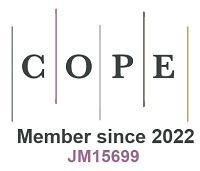REFERENCES
1. Yan Z, Liang Y, Xiao J, et al. A high-kinetics sulfur cathode with a highly efficient mechanism for superior room-temperature Na-S batteries. Adv Mater 2020;32:e1906700.
2. Li Z, Wang C, Ling F, et al. Room-temperature sodium-sulfur batteries: rules for catalyst selection and electrode design. Adv Mater 2022;34:e2204214.
3. Hao H, Hutter T, Boyce BL, Watt J, Liu P, Mitlin D. Review of multifunctional separators: stabilizing the cathode and the anode for alkali (Li, Na, and K) metal-sulfur and selenium batteries. Chem Rev 2022;122:8053-125.
4. Wang L, Wang T, Peng L, et al. The promises, challenges and pathways to room-temperature sodium-sulfur batteries. Natl Sci Rev 2022;9:nwab050.
5. Zhou X, Yu Z, Yao Y, et al. A high-efficiency Mo2C electrocatalyst promoting the polysulfide redox kinetics for Na-S batteries. Adv Mater 2022;34:2200479.
6. Xing C, Chen H, Qian S, et al. Regulating liquid and solid-state electrolytes for solid-phase conversion in Li-S batteries. Chem 2022;8:1201-30.
7. Li S, Zhang W, Zeng Z, Cheng S, Xie J. Selenium or tellurium as eutectic accelerators for high-performance lithium/sodium-sulfur batteries. Electrochem Energ Rev 2020;3:613-42.
8. Xiao F, Yang X, Wang H, et al. Covalent encapsulation of sulfur in a MOF-derived S, N-doped porous carbon host realized via the vapor-infiltration method results in enhanced sodium-sulfur battery performance. Adv Energy Mater 2020;10:2000931.
9. Tzadikov J, Levy NR, Abisdris L, et al. Bottom-up synthesis of advanced carbonaceous anode materials containing sulfur for Na-ion batteries. Adv Funct Materials 2020;30:2000592.
10. Yang G, Zhou Z, Liu X, et al. Bowl-shaped hollow carbon wrapped in graphene grown in situ by chemical vapor deposition as an advanced anode material for sodium-ion batteries. J Colloid Interface Sci 2023;637:283-90.
11. Liu X, Si Y, Li K, et al. Exploring sodium storage mechanism of topological insulator Bi2Te3 nanosheets encapsulated in conductive polymer. Energy Storage Mater 2021;41:255-63.
12. Yan Z, Xiao J, Lai W, et al. Nickel sulfide nanocrystals on nitrogen-doped porous carbon nanotubes with high-efficiency electrocatalysis for room-temperature sodium-sulfur batteries. Nat Commun 2019;10:4793.
13. Aslam MK, Seymour ID, Katyal N, et al. Metal chalcogenide hollow polar bipyramid prisms as efficient sulfur hosts for Na-S batteries. Nat Commun 2020;11:5242.
14. Yang G, Zhou Z, Liu X, et al. Bowl-shaped carbon loaded Co9S8 nanoparticles connected by carbon nanotubes with excellent rate performance for sodium-ion batteries. Electrochimica Acta 2023;441:141804.
15. Li Z, Yang Y, Wen B, et al. Recovered cobalt-nickel sulfide from spent lithium-ion batteries as an advanced anode material toward sodium-ion batteries. J Alloy Compd 2023;956:170328.
16. Zhang S, Yao Y, Jiao X, et al. Mo2 N-W2N heterostructures embedded in spherical carbon superstructure as highly efficient polysulfide electrocatalysts for stable room-temperature Na-S Batteries. Adv Mater 2021;33:e2103846.
17. Zhou D, Tang X, Guo X, et al. Polyolefin-based janus separator for rechargeable sodium batteries. Angew Chem Int Ed Engl 2020;59:16725-34.
18. Huang XL, Wang YX, Chou SL, Dou SX, Wang ZM. Materials engineering for adsorption and catalysis in room-temperature Na-S batteries. Energy Environ Sci 2021;14:3757-95.
19. Fang R, Zhao S, Hou P, et al. 3D interconnected electrode materials with ultrahigh areal sulfur loading for Li-S batteries. Adv Mater 2016;28:3374-82.
20. Kong L, Peng HJ, Huang JQ, Zhang Q. Review of nanostructured current collectors in lithium-sulfur batteries. Nano Res 2017;10:4027-54.
21. Li P, Ma L, Wu T, et al. Chemical immobilization and conversion of active polysulfides directly by copper current collector: a new approach to enabling stable room-temperature Li-S and Na-S batteries. Adv Energy Mater 2018;8:1800624.
22. Zheng S, Han P, Han Z, Li P, Zhang H, Yang J. Nano-copper-assisted immobilization of sulfur in high-surface-area mesoporous carbon cathodes for room temperature Na-S batteries. Adv Energy Mater 2014;4:1400226.
23. Meng W, Dang Z, Li D, Jiang L, Fang D. Efficient sodium storage in selenium electrodes achieved by selenium doping and copper current collector induced displacement redox mechanisms. Adv Funct Materials 2022;32:2204364.
24. Lu C, Li A, Li G, et al. S-decorated porous Ti3C2 MXene combined with in situ forming Cu2Se as effective shuttling interrupter in Na-Se batteries. Adv Mater 2021;33:2008414.
25. Zhou J, Yang Y, Zhang Y, et al. Sulfur in amorphous silica for an advanced room-temperature sodium-sulfur battery. Angew Chem Int Ed Engl 2021;60:10129-36.
26. Zhu P, Gastol D, Marshall J, Sommerville R, Goodship V, Kendrick E. A review of current collectors for lithium-ion batteries. J Power Sources 2021;485:229321.
27. Eng AYS, Kumar V, Zhang Y, et al. Room-temperature sodium-sulfur batteries and beyond: realizing practical high energy systems through anode, cathode, and electrolyte engineering. Adv Energy Mater 2021;11:2003493.
28. Wang Y, Lai Y, Chu J, et al. Tunable electrocatalytic behavior of sodiated MoS2 active sites toward efficient sulfur redox reactions in room-temperature Na-S batteries. Adv Mater 2021;33:2100229.
29. Huang S, Fan S, Xie L, et al. Promoting highly reversible sodium storage of iron sulfide hollow polyhedrons via cobalt incorporation and graphene wrapping. Adv Energy Mater 2019;9:1901584.
30. Li K, Zhang J, Lin D, et al. Evolution of the electrochemical interface in sodium ion batteries with ether electrolytes. Nat Commun 2019;10:725.
31. Li G, Wang S, Zhang YY, Li M, Chen ZW, Lu J. Revisiting the role of polysulfides in lithium-sulfur batteries. Adv Mater 2018;30:e1705590.
32. Harks PPRML, Robledo CB, Verhallen TW, Notten PHL, Mulder FM. The significance of elemental sulfur dissolution in liquid electrolyte lithium sulfur batteries. Adv Energy Mater 2017;7:1601635.
33. Liu H, Lai WH, Yang Q, et al. Understanding sulfur redox mechanisms in different electrolytes for room-temperature Na-S batteries. Nanomicro Lett 2021;13:121.
34. Yan D, Huang S, Von Lim Y, et al. Stepwise intercalation-conversion-intercalation sodiation mechanism in CuInS2 prompting sodium storage performance. ACS Energy Lett 2020;5:3725-32.
35. Liang W, Whangbo M. Conductivity anisotropy and structural phase transition in covellite CuS. Solid State Commun 1993;85:405-8.
36. Perry DL, Taylor JA. X-ray photoelectron and auger spectroscopic studies of Cu2S and CuS. J Mater Sci Lett 1986;5:384-6.
37. Liu Y, Liu M, Swihart MT. Reversible crystal phase interconversion between covellite CuS and high chalcocite Cu2S nanocrystals. Chem Mater 2017;29:4783-91.
38. Fang Y, Yu XY, Lou XW. Bullet-like Cu9S5 hollow particles coated with nitrogen-doped carbon for sodium-ion batteries. Angew Chem Int Ed Engl 2019;58:7744-8.
39. Li H, Wang Y, Jiang J, Zhang Y, Peng Y, Zhao J. CuS microspheres as high-performance anode material for na-ion batteries. Electrochimica Acta 2017;247:851-9.
40. Song YX, Shi Y, Wan J, et al. Direct tracking of the polysulfide shuttling and interfacial evolution in all-solid-state lithium-sulfur batteries: a degradation mechanism study. Energy Environ Sci 2019;12:2496-506.
41. Fang YJ, Luan DY, Chen Y, Gao SY, Lou XW. Rationally designed three-layered Cu2S@Carbon@MoS2 hierarchical nanoboxes for efficient sodium storage. Angewandte Chemie 2020;132:7245-50.
42. Yamada M, Watanabe T, Gunji T, Wu J, Matsumoto F. Review of the design of current collectors for improving the battery performance in lithium-ion and post-lithium-ion batteries. Electrochem 2020;1:124-59.
43. Wang T, Yang H, Lu B. Ultra-stable sodium ion battery cathode realized by Cu7S4 nanoparticles. J Power Sources 2018;399:105-14.
44. Cao X, Lu Q, Xu X, Yan J, Zeng H. Single-crystal snowflake of Cu7S4: low temperature, large scale synthesis and growth mechanism. Mater Lett 2008;62:2567-70.
45. Ye C, Jiao Y, Chao D, et al. Electron-state confinement of polysulfides for highly stable sodium-sulfur batteries. Adv Mater 2020;32:1907557.
46. Yan Z, Liang Y, Hua W, et al. Multiregion Janus-featured cobalt phosphide-cobalt composite for highly reversible room-temperature sodium-sulfur batteries. ACS Nano 2020;14:10284-93.
47. Huang S, Zhang L, Lu X, et al. Tunable pseudocapacitance in 3D TiO2-δ nanomembranes enabling superior lithium storage performance. ACS Nano 2017;11:821-30.








